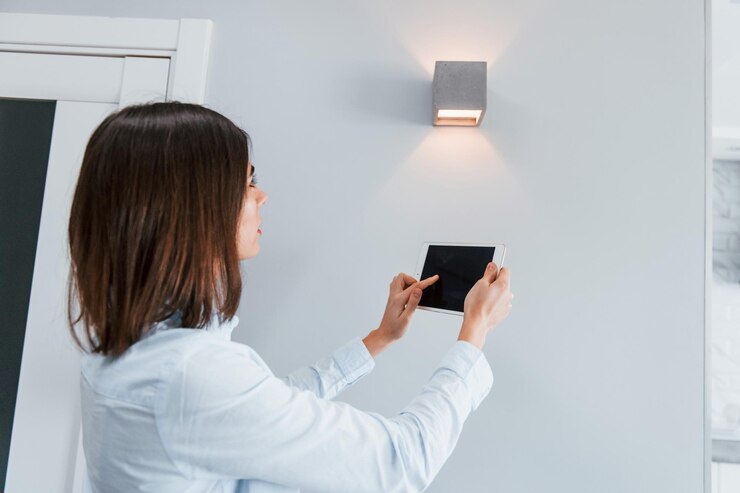How Lighting Control Can Improve Workplace Productivity
Did you know that workplace lighting significantly impacts employee productivity? Studies show that proper lighting can enhance mood, reduce eyestrain, and increase alertness. In this article, we’ll explore how lighting control systems can optimize the work environment, leading to higher efficiency and well-being.
Adjust Lighting for Task-Specific Needs
Different tasks require different lighting levels. For example:
- Reading, writing, and detailed work need brighter lighting to improve focus.
- Brainstorming and creative tasks benefit from softer, warmer lighting to boost innovation.
With a smart lighting control system, businesses can customize lighting to match task-specific needs, helping employees work more comfortably and productively.
Create a Comfortable and Pleasant Work Environment
- Harsh, bright lighting can cause discomfort and distractions.
- Dim, inadequate lighting can strain the eyes, leading to fatigue and headaches.
A lighting control system allows for precise adjustments, ensuring optimal lighting conditions throughout the office. This creates a pleasant workplace atmosphere, promoting employee well-being and efficiency.
Optimize Lighting Levels Throughout the Day
Natural light is beneficial but can sometimes cause glare and uneven lighting. A smart lighting control system:
✔ Balances natural and artificial light for consistent illumination.
✔ Reduces glare to prevent eye strain and discomfort.
✔ Boosts productivity by adapting to circadian rhythms.
By implementing dynamic lighting adjustments, employees remain energized and focused throughout the workday.
Reduce Energy Costs with Smart Lighting
A lighting control system doesn’t just improve productivity—it cuts down energy costs too! Smart motion sensors and automated dimming features help:
✅ Turn off lights in unoccupied rooms, reducing energy waste.
✅ Lower electricity bills, leading to cost savings.
✅ Enhance sustainability by reducing carbon footprint.
Investing in smart lighting solutions benefits both business finances and environmental responsibility.
Enhance Employee Well-Being with Proper Lighting
The right office lighting plays a crucial role in employee health and wellness:
☀ Natural light exposure helps regulate sleep patterns.
😊 Balanced lighting boosts mood and motivation.
💡 Reduced eye strain leads to better concentration and fewer headaches.
A well-lit office creates a healthier, happier work environment, resulting in higher engagement and job satisfaction.
Conclusion: The Benefits of Lighting Control in the Workplace
A smart lighting control system transforms workplaces by:
✔ Enhancing productivity through task-specific lighting.
✔ Creating a comfortable, pleasant work environment.
✔ Optimizing lighting levels throughout the day.
✔ Reducing energy costs with automated controls.
✔ Improving employee well-being through balanced lighting.
By investing in lighting automation, businesses can increase efficiency, improve employee satisfaction, and lower operational costs. Upgrade your workplace lighting today to create a brighter, smarter, and more productive office environment!


